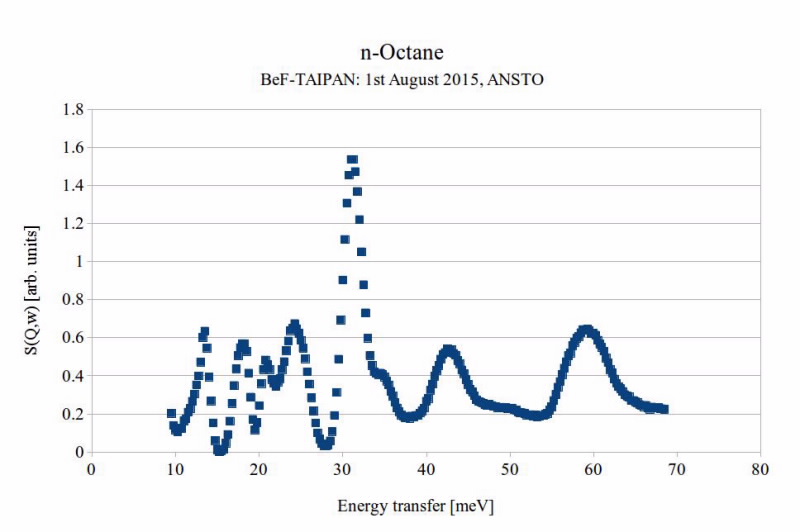Over the last week, the beryllium-filter option on the TAIPAN thermal 3-axis spectrometer has successfully taken its first spectrum from a molecule, as opposed to the initial scans made in September 2014 from elemental vanadium. In this case, a specimen of octane was used. The data are in good agreement with neutron spectra taken on octane elsewhere.

The current cycle of runs on the beryllium-filter option follows the implementation of a number of significant improvements made over the last 6 months: (1) stiffening the monochromator-sample arm so that it does not flex when moved; (2) putting the whole secondary spectrometer and its supporting cryogenic system onto large high-precision airpads; and (3) installing some vibration isolation between the cryoheads and the main spectrometer vacuum vessel. These improvements have all made a significant difference, and the spectrometer now moves in a reproducible way on the dancefloor.
For this experiment, approximately 3g of anhydrous n-octane was loaded into an annular aluminium-alloy can. Measurements were taken at a number of temperatures, but the spectrum shown was taken at 5K. TAIPAN's standard pyrolytic graphite (002) monochromator was used in double-focussing mode. 20' collimation was used between monochromator and sample and the virtual source was 10mm wide. A background has been subtracted from the spectrum. A single spectrum, like that shown, takes about 7 hours to acquire. In the coming month's a new copper (002) double-focussing monochromator will be added to TAIPAN, allowing better resolution in the spectrum, at higher energy transfers.
Published: 06/08/2015


